Bee attractive herbs
I need your collective expertise. We are going to have two bee hives next spring, and I want to expand my herb garden. I would like to plant herbs that are particularly attractive to bees.
We have marjoram, sage, winter savory, oregano, lemon balm, and Mexican tarragon; and for the annuals, basil, dill and flat-leaf parsley.
Could you recommend either annual or perennial herbs that bees like? We are not worried about using the herbs ourselves (although that would be nice). We can expand the herb garden to accomodate almost any herb.
Thank you for your help.
Comments (46)
tasymo
15 years agoComfrey, Bee Balm and Echinacea are all attractive to bees in my garden. Also, any flowering sages (salvias).
granite
15 years agoThe bees have a wonderful time in my yard with the thyme, bee balm, and Lavender. Actually, they get so drunk/overwhelmed on the lavender that they become "tame" and I can move them away with my hand with no problem.
Related Professionals
Horsham Landscape Architects & Landscape Designers · Kyle Landscape Architects & Landscape Designers · West Chester Landscape Architects & Landscape Designers · Andover Landscape Contractors · Bedford Heights Landscape Contractors · Blue Springs Landscape Contractors · Brandon Landscape Contractors · Hilton Head Island Landscape Contractors · Sammamish Landscape Contractors · Thornton Landscape Contractors · Vineyard Landscape Contractors · Welby Landscape Contractors · Wilton Landscape Contractors · New Orleans Roofing & Gutters · East Norriton Roofing & GuttersCA Kate z9
15 years agoIf you're keeping a hive you might want to plant things that either are always in flower or a succession of blooms so there is always something for them to eat. Certain Salvias, along with the herbs, should do that in Texas. Catmint (Nepeta faassenii) is a bee-keeper in my gardens.
Note: a lot of the herbs actually have flowers that are too small for your bees, but still provide food for some very useful teeny-tiny wasps..... and wonderful flavor for your meals.... like dill, fennel and parsley.
eibren
15 years agoMotherwort is reported to be EXTREMELY attractive to bees.
It reseeds itself quite readily, but is better in your "wilder" places; it gets about 3 ft. tall, tends to form in clumps, and is a bit bristly when mature. You will get fairly large stands of it with little or no effort after the initial planting.
It does better with part shade, so it is not difficult to keep it away from your other herbs.
marlingardener
Original Author15 years agoThank you all! I will be planting lots of lavender (which we will enjoy, too) and catmint (I had forgotten what a delightful plant it is) and bee balm (I should have guessed that one!)and comfrey. If I can find a source for motherwort that will go in the back of the herb garden. We have lots of salvias now, but a few more wouldn't hurt, and I'll increase the echinaceas.
Hope the bees enjoy the herb garden as much as I will!marlingardener
Original Author15 years agoRhizo 1,
Yes, I know about the heat! The Spanish lavender does well here, and I know better than to plant the hidcote variety. Hadn't thought of hyssop--thank you for the suggestion! I'll add that to my list. Love the "bee-sicles" reference.
This site is so informative!fatamorgana2121
15 years agoHere's a few:
calendula
sunflower
sage
motherwort
rose
catnip
elecampane
comfrey
echinacea
bee balm
lavender
clover (various)
marshamallow
valerian
yarrow
dandelion
self-heal
feverfewand many other flowering herbs. Include some shrubs/small tree's that flower in your landscaping as well. My hawthorns, currently blooming, sound like bee hives. My crabapple was like that earlier in the spring. Cherries, plums, apples, and other flowering trees/shrubs are possible and actually can be herbs in their own rights. Check out edible landscaping for all sorts of possibilities.
Bees also love my lawn - never any weedkiller used there. I have all sorts of lovely herbs and plants that flower for them for them to visit whenever we are too slow with the mower: multiple clovers, self-heal, yarrow, gill-over-ground, birdsfoot trefoil, devil's paintbrush, dandelion, hawkweed, and more. While I haven't planted a one of these, my yard is no pollinator-wasteland. :)
FataMorgana
herbalbetty
15 years agoGood posts on this thread. We find bees love lavender, bee balm, echinacea, anise hyssop, lion's tail, motherwort and Siberian motherwort, thymes, arnica, red clover, calendula, elecampane, mints, valerian, etc. Basically, what FataMorgana has said, just wanted to add our experience as well. When our black locust trees bloom, it is alive with bees. Ditto our fruit trees and strawberries. And the tatarian honeysuckle bush is crazy with bees. And roses!
ksrogers
15 years agoAbout two weeks ago, I saved a whole honey bee colony that got displaced once the roof was done over on a house across the road. I called a local bee keeper supplier and he came by and took the whole new hive with him. It was built on a open maple tree branch about 8 feet up. Bees everwhere and none could care about us, as they were all loaded with honey. Some of the wax hive broke off when he removed the limb, but most of the bees went with the hive that was left. It was better than seeing someone spraying them with bug killer. I think that might have happened as a few were staggering on the ground below the hive, and they died soon after.
Laura thegardenpages
15 years agoI grow lavender and have lots of bees. I didn't know it calmed them down!
I have a Ceanothus bush that blooms every spring (in So Cal) and the bees love it! I bet they would do well in Texas too.
Also, I see lots of those tiny (native?) bees on it too. It think they like small flowers so they don't feel like they are getting swallowed up!
ksrogers
15 years agoYes, I see tiny bees here too. They like to forage though the dill seed heads whne the first flower. Not only do bees pollinate but many other insects do as well, especailly if they just want something to feed on like the pollen.
marlingardener
Original Author15 years agoOh, wow, I think I need to plan a bigger herb garden! I do thank you all for your suggestions. I am researching some of the herbs to see if they will survive Central Texas summers and also looking for sources of some of the more unusual herbs. I had planned to use one of Madeline Hill's herb garden plans, but now am not sure it would accomodate all the herbs I want. I'll figure out something. Wonder how my husband would feel about plowing up an acre or two of the pasture . . . .
ksrogers
15 years agoThats a LOT of space for herbs!! It may be wise to set up a 'test' area where you can plant a few types that are not as common, just to see if they get bugs, or have problems growing healthy. Many times people will plant a lot of something, then suddently realize that its way too much for a person to deal with as far as harvest and keeping the herbs after the season has passed. Cilantro, is one herb that doesn't do well in hot summer heat, so it would be a good one just to plant in early fall or early spring before the real heat hits
fatamorgana2121
15 years agoOne of my biggest suggestions is to start out small. No pun intended....ok, I do intend the pun....your garden can grow as your experience does. It will reach a level and size that you can take care of and enjoy naturally. This will keep frustrations to a minimum. And by all definitely means try 1 or 2 plants before buying 20. Some plants just don't like the soil, location, amount of sun, and I think sometimes the gardener. While other ones will thrive. By testing them, you'll also find out what you like best too before you have too much invested in a particular type of plant.
Richters is a great source for many unusual herbs. Horizon Herbs is another great source. Nichols Garden Nursery has lots of herb seeds. Richters is in Canada so their plants may take some acclimating to your Texas sun.
Be sure to plant some beautiful Texas wildflowers too. I get catalogs from Wildseed Farms in Texas and I love the pictures of their wildflower meadows. I included a link to them below.
FataMorgana
Here is a link that might be useful: Wildseed Farms
MGPinSavannah
15 years agoFor the last 2 years my basil has been absolutely swarmed with bees every day until it got cold enough for it to die. This is the first year my sage has bloomed, and they've visited those plants, but not in the huge numbers that they came to the basil. We refer to them as our "busy basil bees."
marlingardener
Original Author15 years agoThanks to y'all, I now have a long list of herbs for our bees. I'll start out small (I was joking about plowing up two acres) and give the plants I'm not sure of a small trial to see if the heat/bugs/drought do them in. I haven't let my basil flower (I've been harvesting it before the flower stage) but I'll let a plant or two blossom and see if the current bees like it. Thanks for the suggestion!
ksrogers
15 years agoAnother favorite for bees is garlic chive blossoms. The bees go crazy over them.
herbs77
15 years agoThey love lemon balm. Melissa officinalis is lemon balm's latin name. Melissa means bees.
cheshirekatttt
15 years agoThis is my first year growing herbs also. And since we have gotten rid of all our lawn to have an edible landscaping theme we also like to provide for wildlife. I didn't start off small, but got a large variety of herbs to see what we like to have in cooking and teas as well as medicinal value. Most I have started in pots and will stay in pots. Others are already in my yard. Some of the herbs I have that the bees are interested in are sage (several kinds), roses, comfrey, hyssop, echinacea, bee balm, borage, lemon balm, lavender, clover, valerian, dandelions, chives, five kinds of basil, speedwell, feverfew, blackberries, strawberries, cherries, geranium, elderberries, grapes, blueberries, seven kinds of mints, horehound, roman chamomile, and texas tarragon. I'm sure there are others I've forgotten.
They also like my flowering sedum a lot - it's a succulent and should do well in hot areas. While it's in flower, I see them on those even more than other flowers. All day until just before dark. They are so engrossed in the flowers that I've really been able to practice using the macro setting on my digital camera and haven't been stung once.
By the end of the summer I hope to know which herbs I can grow more of next year. I'm sure I will stick with the same herbs, but have a lot more of them instead of just one or two plants. But I think the bees are happy getting a variety of pollen sources.
Daisyduckworth
15 years agoSome good posts here, but I'll add my mite. I have a herb-only garden, and since I live in the subtropics, many of these herbs
are in flower all year round. The bees gravitate to my Greek Basil in preference to all the others. They must get upset when I prune it, as their numbers are drastically reduced until more flowers appear - even when other plants have flowers begging for attention. I wish I knew where their hive is!! Their honey must be delicious!ksrogers
15 years agoBees are disappearing everywhere. A recent PBS show has some very serious points about beel colonies that are there one day and totally gone the next. They have called it CCD. Its serious and has now been found to come from imported bees from Australia. Many places have bees trucked in like Wymans wild blueberry fields. Without the bees, ther would be no blueberries and most any other flowering plant that produces anything we eat. I have even bought some bee lures which simulate hive and queen scents. These are placed in the garden around areas where there are flowering plants. Luckily, bees here are still a little active. But when you have a tree that has hundreds of blossoms on each and every branch and these do not produce any fruits, something is very wrong... I wish I knew who had used an insecticide on the bees that I rescued recently, as it was obvious that many had been affected by the loss of their home. Luckily there are a few people out there who are careful and realize that honey bees are not going to sting you if you respect them, and treat them without threatening their existance. Imagine honey production in France at, and around lavender fields..
hanknsuzi
15 years agoWe have lavender in the front yard and two bee colonies. They bees love the lavender, as others have said.
marlingardener
Original Author15 years agoTo you all,
A big thank you! I have made a list of all your suggestions, checked to see which ones will likely survive the Texas heat, and revised the list. I also contacted a herb society in the nearest big town, and asked if they would give me sources for the various herbs. They did, and offered to give me some starts this fall and next spring!
Do herbs attract nice people (as well as bees) or do nice people have herbs? Either way, thank you all. You have made two hives and an herb gardener very happy!ssimon2000
15 years agoMarlingardener, I'd be interested in seeing your revised list. I'm working on my own herb garden up here in OKC, and I think are probably fairly close in climate.
One thing I need to work on is getting my wife to understand that herbs are not just for flowering, but for flavoring... I want to put them in the ground where I can harvest on a regular basis; she wants to put them in containers and let them flower (no harvest). I'm thinking we'll end up doing both. :)
fatamorgana2121
15 years agossimon2000, knowing couples where both garden, I think it will work out for the best if you both have your own gardening spaces! :)
marlingardener, I'm glad if I helped at all. It is fun to share with others who love gardening and plants! And it has been my experience too that plant people and gardeners of all sorts are some of the nicest people. Whether it is the exercise, fresh air, or just our plants' influence on us, we end up being happier, calmer, and more grounded people. Enjoy and good luck with your gardening!
FataMorgana
marlingardener
Original Author15 years agoSsimon2000 in Central Oklahoma,
Did you get the e-mail I sent you through GardenWeb with the list of herbs? You expressed interest in seeing the list. I do hope you got it.maggiejk
15 years agoI was interested in all of the recommended bee herbs. We have had such a terrible problem here (eastern WV) with hive collapse that our local apiary went out of business. I used to see many honey bees because he was nearby, but not many now. However, the bumble bees do not seem to be affected and I have a large number visiting my herbs, so I would think that if they like certain plants, that honey bees would too--except for bee balm, which I've grown for many years and have observed that our plants have mainly been visited by bumble bees (hummers seem to like it too), but that may be because they (the worker bees) love so many of the other herbs in the garden better. In very early spring, they like the crocus best, then one of the first culinary herbs that blooms here that they really pay attention to is the chives and krogers is correct, they REALLY love the garlic chives later in July. They also like all of the catmints (we have 4 varieties that bloom about the same time, but at different heights and shades of lavender-blue or purple), the lavenders, and the hyssop, but the 2 plants that seem to attract their attention the most in my garden, are the anise hyssop and this year my new this year, very large 'African Blue' basil, which should do really well in Texas. Did you all notice how many of their favorites are blue-purple or purple. I thought that everyone's other recommendations were also good, but I would hesitate to recommend motherwort in a garden, because it is a terrible weed here, as is catnip, which the bees also favor. However, one man's weed may be a good garden citizen for someone else! Horehound is OK for me, but is regarded as a thug in the northwest, where it has become a noxious weed... Do try the basils, especially that 'African Blue', which unfortunately, can't be grown from seed, but only from a started plant. If you are interested, but can't find one locally, please let me know and I may be able to send you rooted slips when it cools down in September...
fatamorgana2121
15 years agoIf you want to be bee-friendly make sure to have a succession of flowering plants through the growing season, including some trees and bushes. My crab apple and my hawthorn trees were hives unto themselves when they were booming. Yesterday I had fun taking pictures of bees on a golden rain tree which was absolutely humming with bees, even bumbles were loving it first thing in the morning.
FataMorgana
marlingardener
Original Author15 years agoMaggiejk, thank you for the offer of cuttings of the African Blue basil, but I have found a source locally. The herb society in a nearby city has a member who grows it, and will be giving me starts. Your generous offer, however, made my day!
I should have mentioned that in selecting my list of herbs to grow, I made sure that not only they could survive in Texas, but that they didn't all bloom at the same time (thanks for the heads-up, Fata Morgana). We have a small orchard where the hives will be located, and I am planting the strips between the trees with flowers, herbs and small flowering shrubs. If that doesn't satisfy the little buzzers, they will have to make do with the flower beds! Again, thank you all for the help--it is greatly appreciated and will be put to good use!eibren
15 years agoMarlingardener, what did you finally plant for the bees, and how did they respond?
marlingardener
Original Author15 years agoeibren,
We expanded the herb garden, adding African, Genovese and Greek basil, borage, more thymes, more dill, lemon balm, bee balm (monarda), more chives, hyssop, fennel, three kinds of oregano, marjoram, winter savory and mints. I snuck in a few more rose bushes in the yard, and an abelia, too. We have blossoms on something from early
February until probably December.
The bees are so happy! Shortly after we hived them, I noticed bees on the plants nearest the hives. Now they have learned their territory and are all over the place. The neighbors are keeping an eye out for honeybees and reporting any sightings. We live in the country, and don't have close neighbors, but bees will travel two miles for nectar and pollen, so their territory covers three homesteads. It looks like this may work, and mostly because of the great advice I got from this forum. Wish I could send everyone some herbal honey!eibren
15 years agoWish I could see that--I love bees.
I do get a few bumblebees in my garden, beginning, it seems, with visits to the purple flowers of bittersweet in early spring.
We also have a tulip poplar, and I think even hummingbirds visit that.
cyrus_gardner
15 years agoLOts of reponses and suggestions. They are good.
But remember that bees fly !!!
It has been known that honey bees can travel miles every day. This means that they are not going just hang around your yard looking for nectar. Although, it would be nice to have things that they like nearby.I did not read all the posts in their entirety, but did not notice anybody recommending clovers. Yes! Honey bees love clover florets. Does "clover Honey" ring a bell?
Clovers can be planted as companion between garden vegetables like squash, tomato,..They serve several purposes:
1- Your bees will live them
2- Work as mulch, reduce water evaporation.
3- at the end of season you till them in. Good sources of nitogen and oxygen?.dral
15 years agocyrus, I like the idea of using clover as mulch. Had'nt thought of it but will try it as i have clover growing everywhere else.
For a few years i was seeing mostly bumble bees but honeybees seem to be making a comeback.
They seem to like my chammomle flowers too.but really go nuts over my catnip and motherwort
ksrogers
14 years agoBasil blossoms are favorites for bees as are garlic chive flowers. I had praying mantis sitting next to some basil flowers and saw him eating bees. I moved the mantis elsewhere, but it came back the next day and was feasting again.
dral
14 years agoI seem to have a lot of praying mantis here in the woods. Do they prefer woods or are everywhere?
eibren
14 years agoThey affix their egg cases to tall stalks of things, so I suspect they prefer margins and gardens.
I noticed white faced wasps catching flies on the wing in an RV parking area...good thing to remember when trying to decide if it is really necessary to remove them from a situation.
marlingardener
Original Author14 years agoWe've learned so much from this forum and from answers to this post!
We have a website for our Red Gate Farm at www.rgf-tx.com so please come visit us and see our bees, herbs, vegetable garden, and what we're doing to attract wildlife. We are not selling anything, and have a free monthly newsletter you can sign up for safely (we won't share addresses).
We thought it was the least we could do to thank people who have been so generous with their advice and thoughts!ksrogers
14 years agoThe mantis lays eggs in dark biege plastic looking egg case. They are usually about walnut shell size and are layers of a material the mantis produces. Sort of like pages in a book with an egg per page. The can live anywhere where the egg cases can survive preditors. In my case I bought a few of these egg cases and attached them to tree limbs. Suspect that if you have a lot of the mantis, its probabaly due to someone nearby that is releasing them. They do fly quite well and can get into everywhere. Not a bad thing, as they don't care what kind of insect they eat, but if your wanting flowers to attract bees, you have to remove the mantis from the flowering areas so they dont attack and eat the bees. Simply relocating them will cause them to return to their favorite spot again in less than 1 day.
eibren
14 years agoNice website, marlingardener!
I will be looking forward to additional info on your bees!
marlingardener
Original Author14 years agoeibren,
We are going to smoke the bees and check the frames for filled combs this weekend. We hope to find cells with worker bee larvae, capped cells, and a bunch of new worker bees. Our results will be posted in our newsletter for May.
Please keep your fingers crossed for us!ksrogers
14 years agoTo calm down the bees spray them with sugar water. Thats what the bee keeper did when they started to build a big best on a maple tree limb out in the open. My neighbor was startled by the mass of bees just 2 feet above her car. Nice to see up close as they were more interested in building the combs as opposed to defending the nest. I even saw that rear end 'shimmy' dance they do to tell the crowd where the food is. Wish I had my camera with me that time. When the bee keeper came 20 minutes later, he cut the limb off and most of the bees fell into a 5 gallon pail, and were taken away to a good new home. A 3 inch oval piece of wax honeycomb was broken off. Its on my window sill and is remarkable engineering. Last year, the bees swarmed all over my pickling cuke plants every day while in bloom. I would go out and pick at dawn and could hear the loud buzzing while picking. They bees were very calm and were just interested in getting their pollen.
marlingardener
Original Author14 years agoksrogers,
Yes, we have used the sugar water to calm the bees, and you are right--it does a great job! Since we were working with the hive for a longer period of time, we smoked gently.
We were so happy to find larvae, drone cells, cap and more bees than we started out with!
We are hoping to pick vegetables and listen to the hum, as you did. Our ladies are calm and industrious.
We'll be posting pictures of today's hive check on our website. No 3" piece of comb for us yet, but we have hopes!ksrogers
14 years agoThe bees here must have built this comb almost overnight. The woman that parks her car there didn't see them the day before. I also saw some dying on the ground below the swarm. Suspect that they were displaced by a roofing job nearby. People don't think and spray honey bees with insect killers when they don't know the bees are friendly and productive. Now, I have yellow striped paper wasps buzzing around looking to build nests. These I hate and will be putting out traps for them. I always get big wasp nests under my planting table in my greenhouse, and they are tough to remove without getting stung. As a kid, I remember at 5 years old when my cousin poked a stick into a hole in the ground and out came hundreds of them attacking us. My dad heard the screams and ran to grab us 3 kids and we found ourselves in the bath tub for a few hours soaking after that incident. I was very young and only recall the loud buzzing they made before they came out. Honey bees are quite different, and are my garden friends. I was just checking my Orchard Mason bee nesting tubes and saw a few black bees going in and out doing their laying and leaving food for the new brood for early next spring. Luckily, my plum tree is almost in full bloom now, while peach and apricot will soon be out and then apples. Even my Asian pear has a bunch more flowers compared to last year. All is good with mother nature..

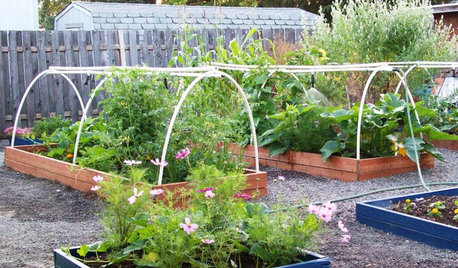


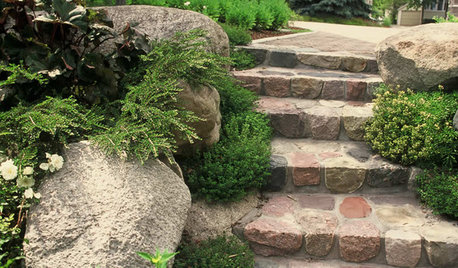
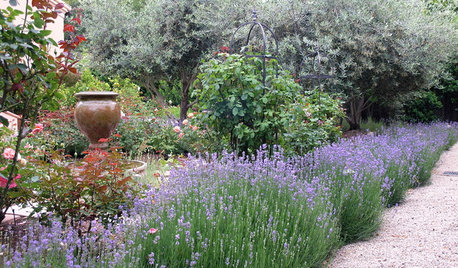
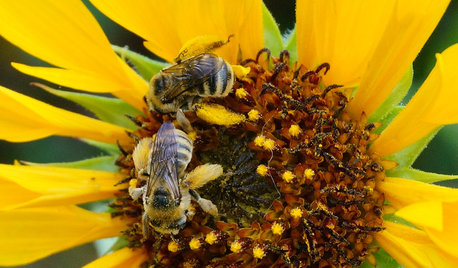
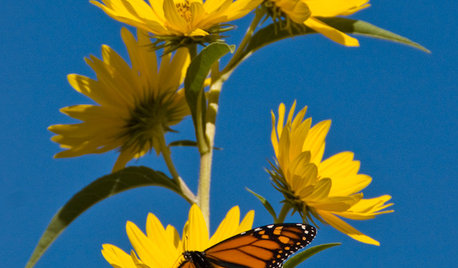
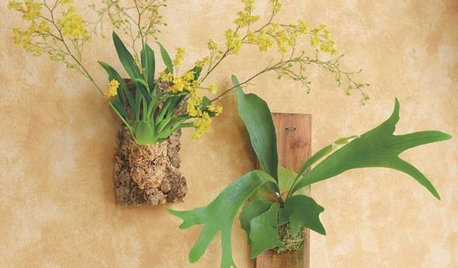











rhizo_1 (North AL) zone 7